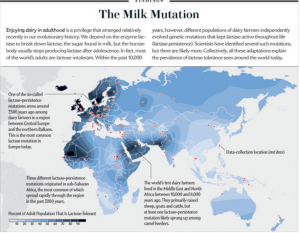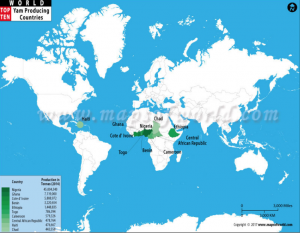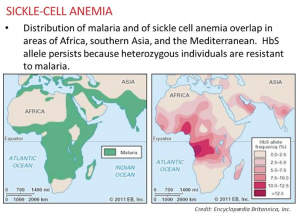BY MAYA GOPALAKRISHNAN | SQ ONLINE WRITER | SQ ONLINE (2017-18)
There are two kinds of students: STEM and non-STEM. These adversaries have been treated as the Batman and Joker, the Luke Skywalker and Darth Vader, the Harry Potter and Lord Voldemort of UC San Diego. However, the influence that science and humanities have on each other is undeniable, and has become even more important as we gain a deeper understanding of the mechanisms behind what makes us human. The connection between how cultural practices manifest themselves in our DNA bridges the gap between the age-old nature vs. nurture debate, and becomes highly significant as genomic technology improves. The cultures of ancient civilizations, such as agriculture and diet, have been shown to have an impact, either directly or indirectly, on the genetic pool of the members of those communities. The selection for favorable traits in each cultural or geographic context over time has occurred to such an extent that these differences in DNA can be observed today.

This connection can be seen in the geographic distribution of lactase persistence, or the ability to process lactose in dairy products. Technically, humans are not supposed to be able to drink milk, eat cheese, or consume any of the dairy products that you probably eat on a daily basis. After being weaned off breast milk, most people around the world suffer from diarrhea and gassy stomachs when they have dairy. However, because dairy farming has been a part of European culture for centuries, European populations had gradually developed lactase persistence [2]. This change in the genetic frequencies of an entire population due to cultural practices can still be seen today.
Globally, South America, Africa, and Asia have extremely high rates of lactose intolerance in comparison to the U.S. Even within the U.S, lactose intolerance has a correlation to ethnic background, as 74% of African- Americans and 53% of Hispanic- Americans are allergic to lactose, while only 13% of Americans of European descent are allergic [1]. The persistence of this change in the DNA of certain populations due to a cultural practice from centuries ago highlights the long term impact our current behaviors could have in the future.
An even more complex, but equally durable, connection between cultural practices and epigenetics involves, of all things, yam farming and resistance to malaria. The story goes like this: communities that practiced yam farming had to cut down trees in order to cultivate the vegetable. This resulted in more standing water after rainfall, creating an ideal breeding ground for mosquitoes [3].

As these mosquitoes carried malaria and spread it to the human population, individuals who had sickle-cell anemia were selected for because of their natural resistance to malaria. Sickle-cell anemia makes red blood cells take on a sickle or crescent shape and prevent malaria from effectively infiltrating the body. Ultimately, the fatality of malaria outweighed the health problems caused by sickle-cell disease, so the presence of the sickle-cell gene soared specifically in communities that practiced yam farming because of their vulnerability to malaria. These communities were mostly found in Africa. Further, the top yam growing nations are all still found in West and Central Africa, as are the countries with the highest rates of malaria and sickle cell disease [4,5].

Leslea J. Hlusko at the University of Illinois in Urbana-Champaign has recognized a gap in the knowledge of paleontologists because of the failure to incorporate genetics into their research [7]. The effect of this has been an oversimplification of some traits that were vital to human evolution. Hlusko argued that her research on early hominids needed the effort of both paleontologists and quantitative genetics in order to settle the new debates that were arising due to the new abundance of data regarding human evolution. In order to integrate these fields, Hlusko organized a symposium on human evolution at the meeting of the American Association for the Advancement of Science [7]. This symposium encouraged collaborative efforts between experts in paleontology, phylogenetics, ancient DNA, developmental genetics, quantitative genetics and primate evolution [7]. By taking an integrated approach to her research, Hlusko hopes to gain a more complete picture of how humans evolved. This way of thinking can be applied to the current behaviors of humans and how this could impact the selection of favorable traits in the future human genome.
Anthropologist and geneticists Connie Mulligan and Lance Gravlee at the University of Florida are using both these fields of study to analyze how connections between racism and genetics contribute to high blood-pressure in African American adults [8]. Mulligan and Gravlee discovered a connection between vicarious racism, or experiencing racism through hearing about others’ experiences, and single nucleotide polymorphisms (SNPs) associated with hypertension [8]. Their research illustrated how sociocultural processes along with genetic factors can have a combined impact on the health of a population. If either of these contributors were investigated individually, rather than in tandem, the research would be incomplete and inaccurate.
As American culture changes and becomes more globally connected, it is necessary to consider what impact our decisions may have on not only the world that future generations will inhabit, but also their genes. This begs the question, will our current practices and behaviors influence the genetic makeup of future generations for better or worse? Tackling this issue requires an interdisciplinary approach to evaluate the extent of the impact of our modern practices and behaviors. This provides a more credible, well supported analysis of our past, as well as a more complete road map for the future.
[hr gap=”0″]
Sources:
https://www.foodbeast.com/news/map-of-milk-consumption-lactose-intolerance-around-the-world/https://news.nationalgeographic.com/2017/10/genetics-history-race-neanderthal-rutherford/http://www.bbc.com/future/story/20140410-can-we-drive-our-own-evolutionhttps://www.mapsofworld.com/world-top-ten/yam-producing-countries.htmlhttp://vttermpaperjubu.lasvegasdentists.us/sickle-cell-anemia-case-study-evolve.htmlhttps://scripps.ucsd.edu/centers/cmbc/education/pier/https://news.illinois.edu/view/6367/207702https://www.americanscientist.org/article/where-anthropology-and-genetics-go-together